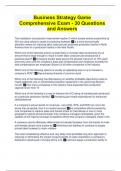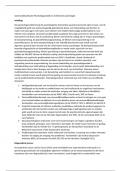Essay
BTEC Applied Science Unit 2A- Titration and Colorimetry (Distinction)
- Module
- Unit 2
- Institution
- PEARSON (PEARSON)
Exemplar assignment for the first assignment of Unit 2 in BTEC Applied Science, Unit 2A, which is about carrying out two titrations and colorimetry of copper sulphate solution. If you take anything from this assignment, please put it in your own words otherwise it will count as plagiarism! Also do ...
[Show more]












